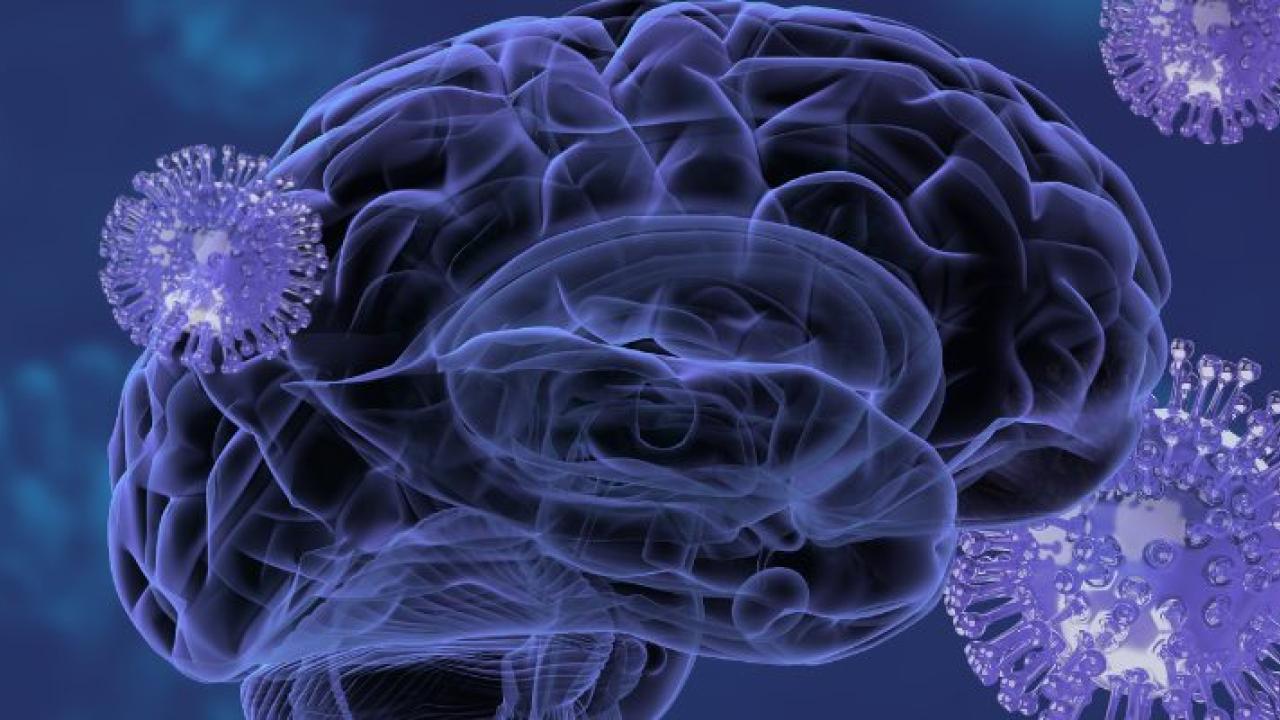
Nonhuman Primate model reveals how HIV infiltrates the brain
Nonhuman Primate Model Reveals How HIV Infiltrates the Brain
A recent study conducted at the California National Primate Research Center (CNPRC) is uncovering how the HIV virus spreads in the brain. Smita Iyer, an Associate Professor in the Division of Experimental and Translational Pathology at the University of Pittsburgh School of Medicine, led the study during her tenure as a CNPRC core scientist. The study, published in December 2023 in PLoS Pathology, mapped the immune response to the virus in neural tissue highlighting the role of immune cells called CD4 T cells in HIV-associated neurodegenerative disorders (HAND).
As many individuals discovered with the brain fog accompanying Covid-19, sometimes a virus makes it beyond the bloodstream into the brain. This invasion can have serious and long-lasting effects. Nonhuman primate models are critical in unveiling how the virus accomplishes this and in exposing the lingering effects of the virus in the brain after clearing the bloodstream.
CD4 T cells might be responsible for carrying [HIV] into the brain and causing inflammation there - Smita Iyer
Despite successful antiretroviral therapy (ART), some patients are plagued with chronic inflammation in the central nervous system. HIV is one of the few viruses known to infiltrate the brain, disrupting functionality in the central nervous system. Neuro-HIV, as it is referred to, has been apparent for decades, yet the details of how the virus enters and interacts with brain cells have remained unclear. Building on a foundation
The CNPRC has a long history of HIV and ART research. As one of the first institutes to develop the simian immunodeficiency virus (SIV) model, CNPRC was a critical part of safety testing for one of the most used ingredients for ARTs, tenofovir. Studies at the CNPRC showed the safety and effectiveness of tenofovir in preventing HIV transmission from a mother to her infant during pregnancy and birth.
The current study builds on CNPRC’s history by utilizing current technologies in nonhuman primates to follow the progression of the virus through brain tissue. A previous study from Iyer’s lab, conducted by graduate students Sonny Elizaldi and Chase Hawes, piqued interest in CD4 T cells when they discovered that these cells were moving into the prefrontal cortex after infection.
Iyer explains, “This movement suggests that CD4 T cells might be responsible for carrying the virus into the brain and causing inflammation there.” To further investigate their hypothesis, they evaluated which cells the virus primarily targeted during both acute infection and chronic infection under suboptimal ART.
To their surprise, not only were CD4 T cells involved in HIV’s infection of the brain, but the virus also launched a robust attack on the central nervous system, even showing up in skull bone marrow. These findings indicate that the virus doesn’t end up in the brain by coincidence; rather, the HIV virus targets the brain, spreading across multiple brain regions.
As the HIV virus attacks the body, CD4 T cells are supposed to act as the body’s security guards, but Iyer’s research found otherwise. Instead of protecting the body, the cells are tricked by the HIV virus to perform a different role. During infection, CD4 T cells begin spreading the virus throughout the body, including the brain. As infection continues, the virus slowly recruits more and more CD4 T cells, depleting the body’s natural protection and leaving it vulnerable to other health threats.
Next Steps
Understanding this mechanism is just the beginning. Iyer’s team is now working to identify the actions of different CD4 T cell subsets during long-term HIV infection. Their most recent article, published on March 12th, 2024, in the Journal of Clinical Investigation, specifically investigated CCR7+ CD4 T cells, a subset of T cells uncommonly found in non-lymphoid tissues such as the brain.
The study found a decrease in CCR7+ CD4 T cell populations corresponding with the brain’s inflammatory response to chronic SIV infection or viral rebound when ART was disrupted. These findings fill one more piece of the puzzle as researchers seek to understand the interactions between HIV and the central nervous system’s immune response.
Written by Logan Savidge
Media Contact: Smita Iyer | siyer.3@pitt.edu
